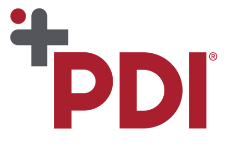Interventional Care


We notice that you are visiting us from . This site only services US-based visitors. Would you like to visit the site that is appropriate for your location?
Given the highly contagious nature of some pathogens, guidance has been developed and promoted by the Centers for Disease Control and Prevention (CDC) for environmental cleaning in areas including healthcare settings. As the pandemic continues to evolve, it is vital to be aware of guidelines and best practices and to stay vigilant in cleaning and disinfecting protocols.
Environmental cleaning procedures should be based on the risk of pathogen transmission which is evaluated by:
+ Likelihood of contamination.
+ Vulnerability of the patients to infection.
+ Potential for exposure (i.e., high-touch vs low-touch surfaces).
These three elements combine to identify low, moderate, and high risk to determine cleaning frequency, method, and process in routine and contingency cleaning schedules for all patient care areas. For more information, review the CDC’s best practices for environmental cleaning. We encourage you to download our latest clinical resource providing insight into understanding disinfection guidance to stay ahead.

Providing accessible, compliant and effective disinfection for dental…
Measles is an acute viral respiratory illness. Airborne isolation protocols should be followed in healthcare including the appropriate use…
The recently released, May 2021, AORN guideline for preoperative skin antisepsis describes the importance of nasal and skin decolonization for the reduction of surgical site infections. This document…
PDI’s Sani-Cloth® Bleach Wipes can help clean more efficiently, keep surfaces looking new for longer, and help protect your…
“Bird Flu” is caused by avian influenza A viruses that typically spread between birds, not humans. Wild water birds…
Protect Patients, Staff, and Visitors in Healthcare Settings: Norovirus is the leading cause of foodborne outbreaks. Over half of…
At PDI, we’re advancing our product range with a commitment to environmental and social responsibility, prioritizing safety, quality, and…
Your Total Environment of Care Solution: From the innovators of germicidal wipes for healthcare, our Environment of Care product…
Do not let your guard down! As we enter respiratory virus season, it will be important to prepare for influenza…
Compatibility with plastics, metals, and other common materials is a critical design criteria for PDI formulations. We continually test…
Did you know that your phone can house 17,000 germs, and hands can have 4.6 million bacteria? Learn more…
The Use of 3.15% Chlorhexidine Gluconate/70% Alcohol Hub Disinfection to Prevent Central Line-Associated Blood Stream Infections in Dialysis Patients …